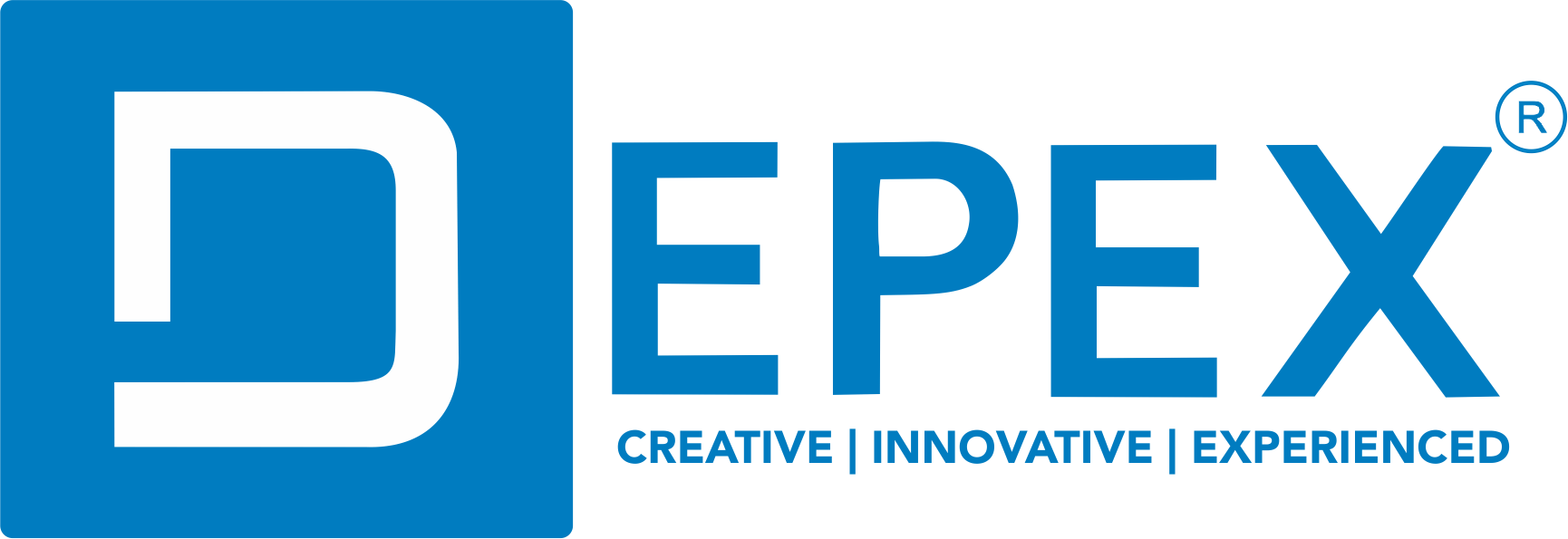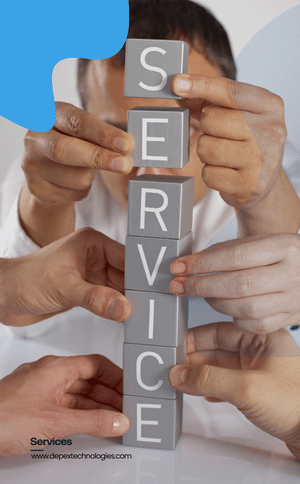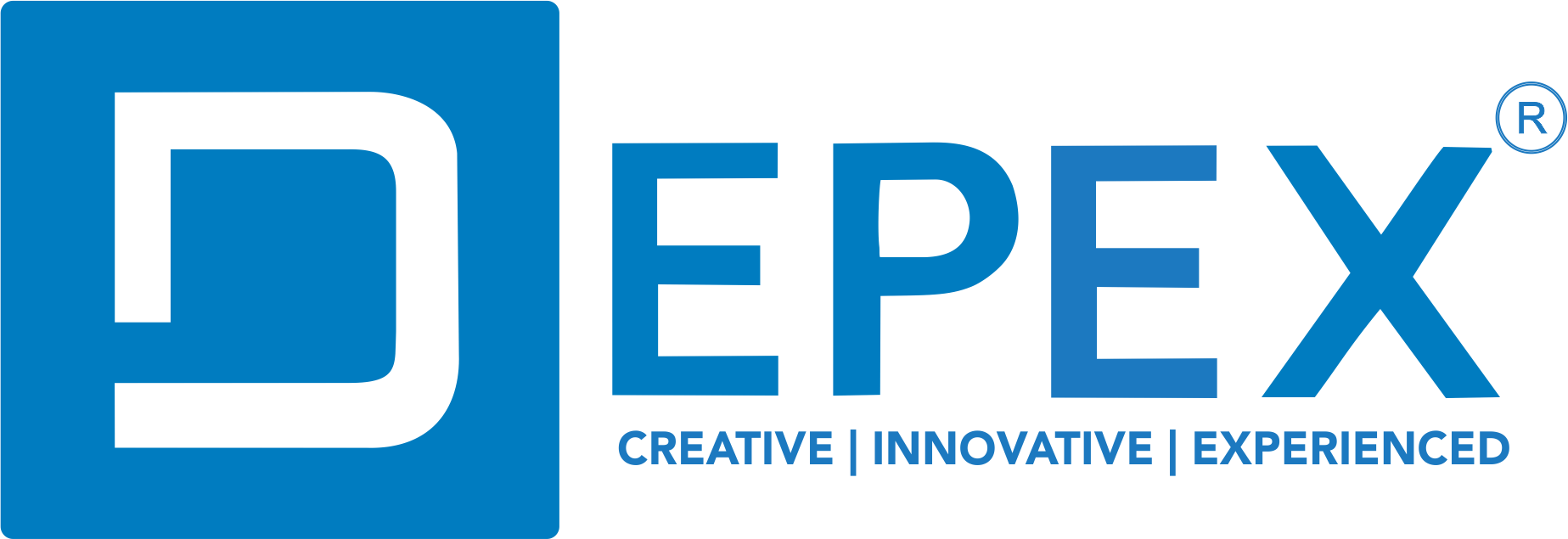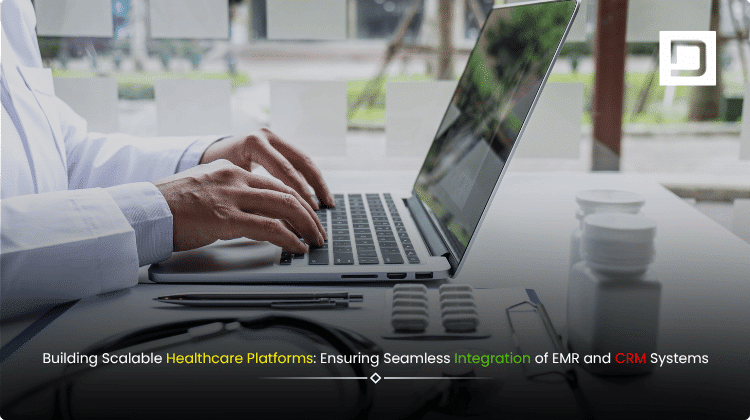Building Scalable Healthcare Platforms: Ensuring Seamless Integration of EMR and CRM Systems
In today’s rapidly evolving healthcare landscape, building scalable healthcare platforms has emerged as a critical need for hospitals, clinics, and health-tech startups. As digital transformation accelerates, the seamless integration of Electronic Medical Record (EMR) and Customer Relationship Management (CRM) systems is essential for providers seeking to deliver patient-centric care, optimize operations, and remain competitive. In this comprehensive guide, we’ll explore the challenges, best practices, and future trends shaping the integration of EMR and CRM, and show you why Depex Technologies is your ideal partner for building robust, scalable healthcare solutions.
The Urgency for Scalable Healthcare Platforms
The healthcare industry is facing unprecedented pressures—rising patient volumes, regulatory changes, increasing data complexity, and heightened expectations for personalized care. At the heart of these challenges lies the need for scalable healthcare platforms that can adapt and grow with organizational needs, all while supporting seamless integration across disparate systems. Building scalable healthcare platforms is no longer a luxury; it’s a necessity for organizations striving to improve patient outcomes, streamline workflows, and achieve operational resilience.
A scalable healthcare platform enables providers to:
- Accommodate increasing data and user loads without degrading performance
- Integrate new tools, applications, and third-party systems effortlessly
- Meet regulatory requirements and industry standards
- Enhance patient experience with holistic, real-time data
But achieving true scalability is only half the battle. The other half? Ensuring all your critical systems—especially EMR and CRM—work in harmony.
The Pivotal Role of EMR and CRM in Healthcare
To understand the need for integration, it’s important to recognize the distinct and complementary roles of EMR and CRM systems in modern healthcare environments.
What is an EMR System?
Electronic Medical Record (EMR) systems are digital versions of the paper charts found in clinics and hospitals. They centralize patient health data, from medical histories and diagnoses to treatment plans, lab results, and physician notes. EMRs are essential for clinical workflows, supporting everything from appointment scheduling and billing to e-prescribing and regulatory reporting.
What is a CRM System in Healthcare?
While traditionally associated with sales and marketing, Customer Relationship Management (CRM) systems in healthcare focus on managing interactions with patients across their care journeys. A healthcare CRM supports patient engagement, communication, follow-up reminders, satisfaction surveys, marketing campaigns, and analytics.
Why Integration Matters
Despite their individual strengths, EMR and CRM systems often exist in silos. This fragmentation can lead to data duplication, communication gaps, workflow inefficiencies, and a fragmented patient experience. Seamless integration bridges these divides, empowering providers with a single, unified view of each patient and facilitating a more holistic approach to care.
The Challenges of Integrating EMR and CRM
Integrating EMR and CRM systems is essential for building scalable healthcare platforms, but it’s not without its challenges. Understanding these complexities is crucial for successful implementation.
1. Data Interoperability
Healthcare data is notoriously diverse, with variations in formats, terminologies, and standards. EMRs typically use HL7, FHIR, or proprietary protocols, while CRMs may follow entirely different schemas. Achieving true interoperability—where data flows freely and meaningfully between systems—is a formidable challenge.
2. Regulatory Compliance
Healthcare is one of the most regulated industries. Integrating EMR and CRM systems requires meticulous attention to data privacy, security, and compliance mandates such as HIPAA (in the US), GDPR (in Europe), and other local regulations. Any integration solution must ensure data integrity, access controls, and audit trails.
3. Legacy Systems and Vendor Lock-In
Many healthcare organizations rely on legacy EMR or CRM systems, which may not have modern APIs or integration capabilities. Vendor lock-in can further complicate efforts to connect disparate platforms, limiting flexibility and innovation.
4. Security and Data Privacy
With sensitive patient data at stake, security is paramount. Integration must not create new vulnerabilities or compromise data confidentiality. Robust encryption, user authentication, and access control mechanisms are essential.
5. Workflow Alignment
EMR and CRM systems often support different workflows and user roles. Integration requires careful process mapping to ensure that data flows align with real-world tasks and responsibilities, minimizing disruptions and maximizing value.
Key Benefits of Seamless EMR and CRM Integration
Despite these challenges, the benefits of building scalable healthcare platforms with seamless EMR and CRM integration are transformative:
Holistic Patient View
Integrated systems provide a 360-degree view of each patient, merging clinical and non-clinical data into a single source of truth. Physicians, nurses, and administrative staff can access comprehensive profiles, improving care coordination and personalization.
Enhanced Patient Engagement
CRM-powered engagement tools—like automated appointment reminders, follow-up surveys, and targeted health campaigns—become even more powerful when fueled by real-time EMR data. Patients benefit from timely, relevant communications that support their health journeys.
Improved Care Coordination
Care teams can collaborate more effectively when they share up-to-date information. Integration eliminates data silos, reduces manual entry, and ensures everyone is on the same page.
Streamlined Workflows
Automated data flows and process integration reduce administrative burden, minimize errors, and free up staff to focus on patient care. For example, when a patient books an appointment through the CRM, the information is instantly reflected in the EMR, eliminating duplication.
Data-Driven Insights
With unified data from EMR and CRM systems, healthcare organizations can unlock powerful analytics—tracking patient outcomes, monitoring satisfaction, optimizing resource allocation, and identifying population health trends.
Best Practices for Building Scalable Healthcare Platforms
So, what does it take to design and implement a scalable healthcare platform with seamless EMR and CRM integration? Here are the foundational best practices embraced by leading organizations and experts:
1. Start with a Clear Strategy
Every successful integration starts with a well-defined strategy. This means understanding your organization’s goals, user needs, regulatory environment, and future growth plans. Define what scalability means for you—whether it’s supporting more users, new locations, additional services, or advanced analytics.
2. Choose the Right Technology Stack
A scalable healthcare platform demands modern, flexible technologies. Opt for cloud-native architectures, microservices, and robust APIs to ensure seamless connectivity and agility. Open standards like HL7 FHIR are critical for data interoperability.
3. Prioritize Data Security and Compliance
Embed security and compliance from day one. Implement end-to-end encryption, strict user authentication, and detailed audit trails. Partner with vendors who understand the regulatory landscape and have a proven track record in healthcare security.
4. Leverage APIs and Middleware
Middleware solutions and APIs act as bridges between EMR and CRM systems, translating data formats, mapping workflows, and ensuring seamless connectivity. Many modern platforms now offer ready-to-use connectors for popular EMRs and CRMs.
5. Plan for Change and Growth
A scalable platform is built for evolution. Design your integration architecture to accommodate new data sources, third-party applications, and regulatory changes. Regularly review and update integration points as your organization grows.
6. Focus on User Experience
Ultimately, the success of any healthcare platform depends on adoption by clinicians, staff, and patients. Invest in intuitive interfaces, role-based dashboards, and streamlined workflows. Gather user feedback early and often.
7. Test, Monitor, and Optimize
Continuous testing, monitoring, and optimization are essential. Use automated testing tools to validate data flows, monitor system performance, and address bottlenecks proactively.
Real-World Applications: Building Scalable Healthcare Platforms in Action
Let’s look at how seamless EMR and CRM integration is transforming healthcare organizations worldwide.
Patient-Centric Care Coordination
A multi-site hospital network adopts a unified healthcare platform, integrating EMR data with a CRM-powered patient engagement suite. Physicians and care managers can now view a patient’s complete medical history, appointment interactions, and communication preferences from a single dashboard. This integration streamlines care transitions, reduces readmissions, and boosts patient satisfaction scores.
Data-Driven Outreach and Marketing
A specialty clinic uses its integrated platform to launch targeted wellness campaigns based on EMR insights. Patients with chronic conditions receive personalized tips, appointment reminders, and medication refills—all automated through CRM workflows informed by real-time health data. The result? Higher engagement, better adherence, and improved health outcomes.
Operational Efficiency and Resource Optimization
A growing telehealth provider leverages a scalable platform to connect EMR, CRM, and billing systems. Automated data flows eliminate manual entry, minimize errors, and optimize provider schedules. As patient volume increases, the platform scales effortlessly, supporting new services and locations.
Emerging Trends Shaping Healthcare Platform Integration
The future of building scalable healthcare platforms is being shaped by several powerful trends:
Artificial Intelligence and Machine Learning
AI-powered analytics are unlocking new possibilities in healthcare. Integrated EMR and CRM platforms enable predictive modeling, risk stratification, and personalized care pathways—helping providers intervene earlier and improve outcomes.
IoT and Remote Monitoring
Wearables and connected devices generate a wealth of health data. Seamless integration with EMR and CRM systems allows providers to monitor patients remotely, trigger automated alerts, and engage patients in proactive care.
Patient Self-Service and Digital Front Doors
Modern healthcare platforms are empowering patients to take charge of their health journeys. Integration enables online appointment booking, secure messaging, digital check-ins, and access to personalized health resources—all through a unified portal.
Cloud-Native and API-First Architectures
The move to cloud-native, API-first platforms is making integration faster, easier, and more cost-effective. Organizations can rapidly deploy new features, connect to partner networks, and innovate at scale.
Building Scalable Healthcare Platforms with Depex Technologies
At Depex Technologies, we understand the complexities and opportunities of building scalable healthcare platforms with seamless EMR and CRM integration. Our team of healthcare IT experts combines deep technical know-how with a keen understanding of industry regulations, user needs, and digital transformation best practices.

Why Choose Depex Technologies?
1. Proven Healthcare Expertise
We’ve partnered with hospitals, clinics, telehealth providers, and health-tech innovators to deliver mission-critical solutions that drive measurable outcomes.
2. Custom Solutions for Your Unique Needs
We don’t believe in one-size-fits-all. Our approach starts with listening—understanding your workflows, challenges, and vision—then designing a platform tailored to your requirements.
3. End-to-End Integration
From system analysis and API development to security implementation and user training, we handle every aspect of integration with precision and care.
4. Scalability and Future-Readiness
Our solutions are engineered for growth. Whether you’re a small practice or a nationwide network, we build platforms that scale with you.
5. Dedicated Teams and Ongoing Support

For long-term projects, Depex Technologies offers dedicated developers or entire teams to work as an extension of your organization. We provide ongoing support, maintenance, and continuous improvement—ensuring your platform evolves with your business.
Conclusion: Empowering the Future of Healthcare
As healthcare continues its digital transformation, the ability to build scalable healthcare platforms with seamless EMR and CRM integration is becoming a key competitive differentiator. The benefits—improved patient outcomes, streamlined operations, enhanced engagement, and actionable insights—are too compelling to ignore.
If your organization is ready to embark on this journey, partner with Depex Technologies. We bring the expertise, innovation, and commitment you need to succeed. Whether you’re starting from scratch or seeking to modernize existing systems, our dedicated developers and teams are here to support you every step of the way—across the globe.
Transform your vision into reality. Contact Depex Technologies today to build a healthcare platform that empowers care, drives growth, and stands the test of time.






